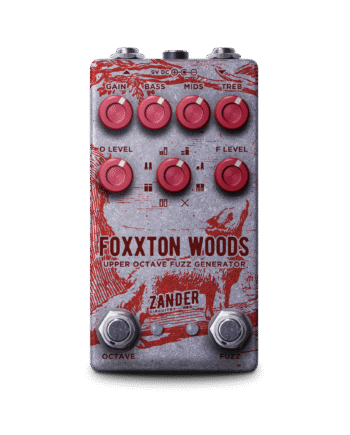Description
This circuit has gained a bit of a cult following over the years, thanks in no small part to its heavy usage by producer & guitarist Steve Albini on various records, inspiring a number of clones from smaller builders in recent years, including us!
In typical Zander fashion though we’ve not just recreated the original circuit, we’ve reworked and added parts to turn it into its own versatile creation. This includes swapping out the one germanium transistor for another silicon, and offering control over additional parameters like input filtering, tone and circuit voltage, which all together create a pedal that’ll do everything from a clean treble boost to a spitting/gated ‘Jack White’ style fuzz and everything in between.
On top of the self explanatory level and gain controls, the Cafetiere adds a bunch of additional controls that let you fine tune your fuzz sound! The Input control alter the input capacitance, which effects the low end and overall gain response; Starve drains the circuit of voltage when turned down, which will choke out the decay of the notes and compress the attack; and Tone is a simple low pass filter to tame some of the high end that circuits such as this have quite a bit of.
The Cafetiere also features our signature diode rotary switch, which lets you choose between eight clipping types for added versatility:
- Germanium: Smooth, sweet, and classically ‘amp-like’.
- Silicon: Louder, brighter, and a little bit brittle.
- LED: Louder again, with less saturation and more punch.
- Asymmetrical germanium: A more aggressive version of germanium.
- Asymmetrical silicon: A more aggressive version of silicon.
- Asymmetrical LED: A more aggressive version of LED.
- Transistor/MOSFET: Similar to silicon, but sweeter and crunchier.
- No diodes: Loads of output and much less gain.
And for those who just can’t choose between low and high gain, the Cafetiere’s Blast footswitch turns the gain all the way up, and activates a second volume control for seamless transitions between low and high-gain sounds.
There are seven controls that you’ll use to tame the American Geek:
- Gain: Gain control
- Tone: Low pass filter
- Starve: Circuit voltage reduction
- Input: Low end and gain response
- Level: Output volume
- Blast: Output volume (in Blast mode)
- 1-8: Clipping diode selector
It also has two footswitches:
- Engage: Turn it on and off
- Blast: Activate Blast mode
The Cafetiere features both momentary and latching switching, which means you can hold down one of the footswitches to temporarily engage an effect and then release it to return to normality.
Not to mention:
- Top-mounted in/out jacks
- Power requirements: 9V DC (center-negative) supply
- Current draw: 126 mA
Dimensions:
- (W)67 mm x (L)122 mm x (H)60 mm
Please don’t try to power this pedal with anything other than a 9V DC supply. If you do, your shiny new pedal might stop working, and nobody wants that.





